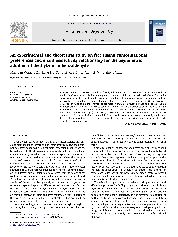摘要
An experimental and theoretical study on free ligand conformational preferences and enantioselectivity relationship has been described for the asymmetric addition of diethylzinc to benzaldehyde. The results show that a correlation must exist between the ground-state ligand conformational populations and the observed ee values in this reaction. As the populations of the free ligand conformation (the desired conformation) in favor of the improvement of the reaction enantioselectivity increase, so does the reaction enantioselectivity. However, the desired conformation must not be the preferred one of the ground-state ligand. This conformation-enantioselectivity relationship is well explained based on a zinc amino-alkoxide (a true asymmetric catalyst). The final synthesis and assessment of the new chiral catalyst in the asymmetric addition of Et2Zn to benzaldehyde revealed that this necessary relationship guided our design of highly enantioselective ligands or rational improvement of existing ligands by means of knowledge of conformational analysis.
- 出版日期2010-3-16
- 单位郑州大学
